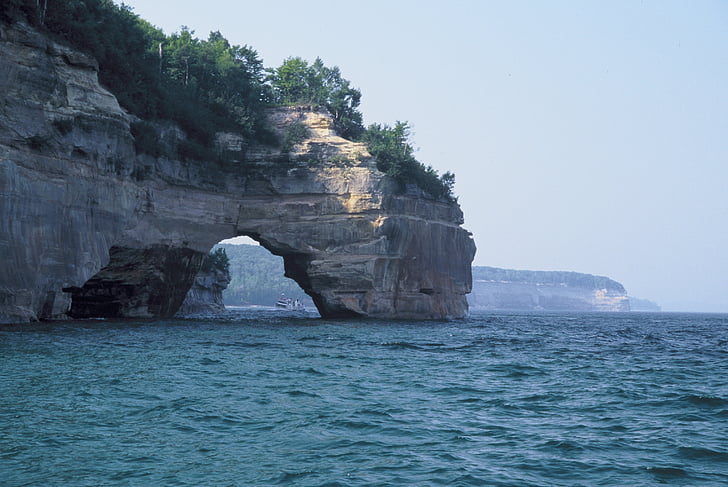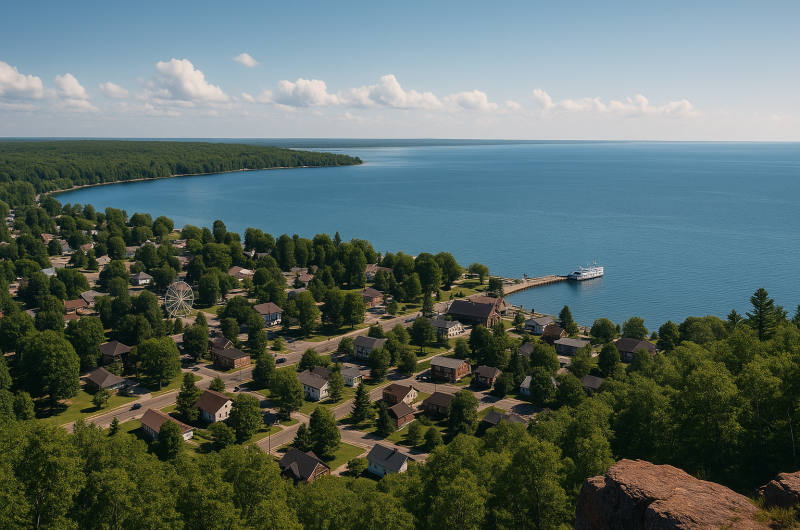The U.P.’s Post-Covid Economic Performance: The Importance of Recreation and Tourism

Several nationwide studies have identified counties that are dependent on recreation-related employment as outperforming other rural counties in job creation. This employment growth is particularly notable as the 2020 Covid pandemic severely curtailed travel and led to widespread layoffs in the hospitality industry.
Mackinac county is one of Michigan’s most tourist dependent counties and its unemployment rate hit 34.3 percent in April 2020, a month after Covid restrictions were introduced. Three years later, total employment in the county exceeds its pre-Covid levels.
Nationwide, rural recreation-dependent counties–built around natural amenities and businesses catering to tourists–added 1.1% more jobs between September 2019 and September 2023, while the equivalent figure for rural counties that depend on government employers like prisons and universities was 0.4%.
In contrast, job losses were associated with farming, manufacturing, mining and so-called non-specialized rural counties. The US Department of Agriculture’s Economic Research Service developed this typology as a mutually exclusive system to describe each US county’s economic dependence.
Recreation-dependent counties, for example, are defined by a formula that includes earnings in entertainment, recreation, accommodations, food/drink, and real estate, and the percentage of housing set aside exclusively for seasonal use (see https://www.ers.usda.gov/data-products/county-typology-codes/descriptions-and-maps/ for further information).
This article compares recent changes in population, employment and median household income in recreation and government dependent counties in the Upper Peninsula using data from the US Bureau of Labor Statistics and Census. Seven of the U.P.’s counties are classified as recreation dependent, while five are classified as government-dependent (Table 1).
Population
The population dynamics of the U.P. are well documented. Migration is the only source of population growth, since the region has more deaths than births due to an aging population and a falling birth rate. The total population for the recreation dependent counties increased by 1.1% from 2020 to 2023, with six of the seven recreation dependent counties experiencing population gains (Table 2a).
In contrast, the total population for the government-based counties was largely unchanged (Table 2b). Keweenaw County experienced the largest gain in percentage terms (+5.4%), but Marquette County had the largest absolute increase of an estimated 987 persons.
Gogebic’s population decline is the sole anomaly among recreation dependent counties; its population peaked in 1920 and apart from a small reversal in 1940 its total population has fallen in every successive census up to the present.
Employment Change
To control for seasonal variations in employment, an annual average figure is used for 2020 and 2023. Total employment in recreation dependent counties increased by 7.4 percent between the two time periods (Table 3a). Mackinac County, home to Mackinac Island, had the largest percentage employment increase. The Island has received the ‘Best Summer Travel Destination’ award in the US for two successive years and tourists keep coming.
The number of private businesses in the hospitality and leisure sector increased by 25 percent between the summers of 2019 and 2023. Keweenaw County, with the next highest percentage gain in employment, is home to Isle Royale National Park and numerous protected natural areas that provide hiking opportunities.
The number of private leisure and hospitality businesses in the county increased from 19 in 2019 to 25 in 2023, while Marquette County experienced about a 10 percent gain in tourist businesses. At the other extreme is Iron County, where the number of hospitality businesses is largely unchanged and the gain in employment since 2020 is relatively small.
Among government dependent counties, total employment increased by 8.5 percent, largely as a result of double-digit employment increases in Alger and Houghton (Table 3b).
Changes in Median Household Income
Job increases indicate a growing economy, but if the majority of newly created jobs are low paying and only provide part-time employment, as is the case for much of the leisure and hospitality industry, then any change in median household income is likely to be modest at best.
Median household income in all recreation dependent counties lags behind the state figure (i.e. a value less than 100), but the gap in income between the state and six of the counties narrowed over the 2019-2022 period (Table 4a). This suggests that employment growth is more broad-based than the term ‘recreation dependent’ implies, and includes higher paying service sector jobs.
Mackinac, Gogebic and Keweenaw counties saw the biggest improvements in household income. Mackinac County’s increase from $44,986 in 2019 to $56,942 in 2022 is significant given the winter layoffs in the tourist sector, when the number of visitors drops. Gogebic County’s median household income increased by over $11,000, which is indicative of a tightening labor market with employers having to pay more for workers.
The average weekly wage of hospitality and leisure workers, for example, went from $449 in 2019 to $641 four years later, a 43 percent increase. In Ontonagon, household incomes stagnated and effectively fell behind the state; in 2019, the county’s median household income was $45,531, by 2022 the figure was $45,694.
Median household income in the five government dependent counties also lags behind the state figure for both time periods (Table 4b). However, unlike some of the recreation dependent counties the improvement in incomes is relatively modest, with Luce and Baraga counties failing to close the gap on the state figure over the 2019-2022 period.
Conclusions
The majority of recreation counties outperformed their government dependent counterparts in the post-Covid period in terms of gains in population and median household income, while government counties had a slight edge in job creation. This suggests that despite recreation dependent counties’ smaller job gains they extend beyond the traditional low-paying and seasonal hospitality sector to include higher-paying service sector jobs.
As to whether these economic gains can be sustained remains to be determined. Finally, the data fail to indicate whether long-term residents are benefiting from the improving economy, or whether the region’s natural amenities are under threat from tourist-related development. A failure for local residents to benefit from tourism risks arousing opposition to the industry’s presence.













Michael as usual a well developed article on the contemporary scene. Thank you.